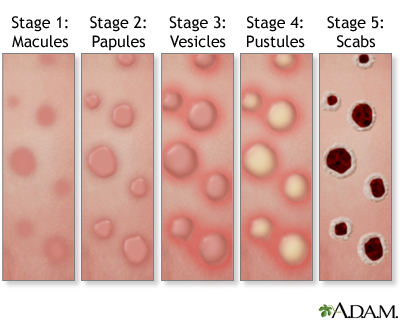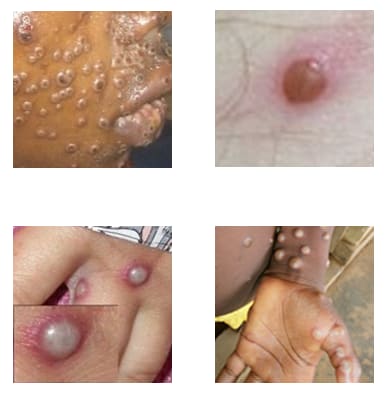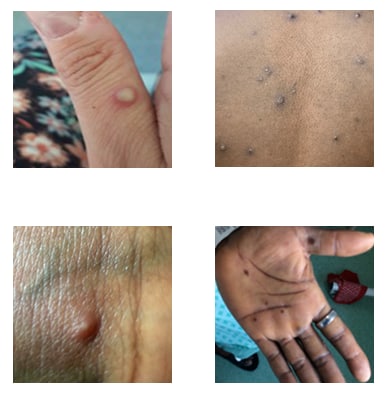What Does Monkeypox Look Like?

Have you heard about the rise in monkeypox (now called mpox) cases? It's a cause for concern, but there's no need to panic. While mpox can cause flu-like symptoms like fever, fatigue, and headaches, the most telltale sign is a distinct rash.
That's why we're here to shed some light on this topic. In this blog post, we'll be your guide, demystifying the mpox rash with clear explanations and helpful visuals. By the end, you'll be able to identify the different stages and variations, empowering you to seek medical attention if needed. So, ditch the confusion and join us on this visual journey to unmask the mpox rash.
By the end, you'll be able to identify the different stages and variations, empowering you to seek medical attention if needed. So, ditch the confusion and join us on this visual journey to unmask the mpox rash.
Mpox Rash: A Visual Journey
Stages of the Mpox Rash
The mpox rash typically progresses through several distinct stages:
- Macules: The rash begins as small, flat, red spots on the skin. These macules may initially be difficult to see, especially on darker skin tones.
- Papules: The macules then develop into raised, firm bumps called papules. These papules can be painful or itchy.
- Vesicles: The papules eventually fill with a clear fluid, forming blisters or vesicles. These vesicles can be quite painful.
- Pustules: The vesicles then transition into pustules, which are filled with a yellowish or white fluid. The pustules can be quite large and may have a central depression or "umbilication."
- Scabs: Finally, the pustules dry up and form scabs, which eventually fall off, leaving behind smooth, pink skin.
The progression through these stages can take several weeks, and the rash may appear in waves, with new lesions developing as older ones are healing.
Where Does the Rash Typically Appear?
The mpox rash can appear on various parts of the body, but some common locations include:
- Face
- Hands
- Feet
- Genitals
In the current outbreak, there has been a trend of rashes being concentrated in the genital area, which may be due to the mode of transmission (close, intimate contact).
Variations on a Theme: Atypical Mpox Rashes
While the classic mpox rash follows the progression described above, the current outbreak may present with some atypical rashes. These variations can include:
- Fewer lesions than the typical presentation
- Rashes concentrated in a specific area of the body, such as the genital region
It's important to note that even if the rash appears different from the classic description, it's still crucial to consult a healthcare provider for any unexplained rash or skin changes. Proper diagnosis and treatment are essential for managing mpox and preventing the spread of the virus.
When in Doubt, Seek Help
While this guide has given you a roadmap for understanding the mpox rash, it's important to remember that this information is for educational purposes only.
If you notice any unusual rash, especially one that resembles the descriptions or images in this post, don't hesitate to seek help from a healthcare professional. Early diagnosis of mpox is crucial for effective treatment and preventing transmission to others.
Your doctor can perform a simple test to confirm or rule out mpox. The sooner you get diagnosed, the sooner you can receive proper care and prevent further spread.
Conclusion
We hope this information empowers you to recognize its telltale signs. Remember, early diagnosis is key to getting proper treatment and preventing the spread of mpox. If you suspect you might have mpox, don't hesitate to reach out to a healthcare professional.




